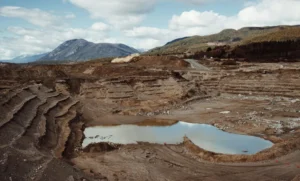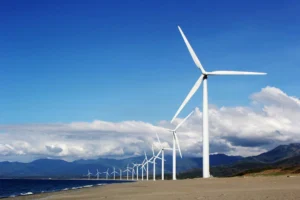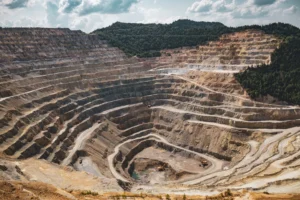Ever wonder why your hot coffee cools down with time, or how a cozy fireplace warms you up? It’s all because of thermal energy! This invisible force is at play in everything around us, from the way we cook our food to how power plants generate electricity. In this blog, we will look into the world of thermal energy, explaining its nature, mechanisms, and applications in an interesting and easy-to-understand way.
Thermal Energy
Thermal energy is a type of energy that comes from the movement of particles in a substance. When these particles move faster, they create more heat.
This energy can be found in various forms, such as the warmth from the sun, the heat from boiling water, or even the energy stored in the Earth’s core.
Thermal Energy Definition

Thermal energy, also known as heat energy, is the internal energy of a substance due to the motion of its particles. It is simply the same as temperature: the temperature determines the rate at which the energy is transmitted, and that’s high in direct proportion to the temperature.
A pot of water on a stove helps here; as the temperature goes up, so do the speeds of the molecules, building the thermal energy.
At its essence, thermal energy arises from the three forms of kinetic energy:
- Translation: Particles moving in a straight line.
- Rotation: Particles rotating around an axis.
- Vibration: Particles vibrating back and forth.
Major Characteristics
Thermal energy is all about movement at the micro level. The faster the particles move, the more energy they produce. Crucially, this energy cannot be trapped or contained; it exists only as part of a system’s total energy.
Modes of Heat Transfer
Heat energy does not stay put; it travels and diffuses by three basic methods: conduction, convection, and radiation.
A. Conduction
Conduction occurs when heat flows through direct contact. For example, imagine putting your hand on a hot stove-the heat transfers from the stove to your hand through conduction. Thermal conductors such as metals can efficiently transfer heat energy; insulators such as wood are poor thermal conductors.
B. Convection
Convection is the transfer of heat through fluids. A good example is boiling water: as it heats up, the warmer, less dense molecules rise, while the cooler, denser ones sink, in a cycle that distributes thermal energy evenly.
C. Radiation
It radiates heat by the transfer of energy through electromagnetic waves, with no need for any physical medium. Feeling the sun’s warmth on your skin is radiation at work—a direct journey of thermal energy across millions of miles of space.
Measurement of Thermal Energy
A. Temperature as a Measure of Thermal Energy
Temperature is a very practical measure of thermal energy. It is measured in various scales:
- Celsius (°C): Widely used throughout the world.
- Fahrenheit (°F): Most commonly used in the USA.
- Kelvin (K): The scientific standard.
The relationship is straightforward: higher temperature means more average kinetic energy for particles.
B. Thermodynamics and Thermal Energy
Thermal energy is the star of thermodynamics, the study of energy and its transformations. The First Law of Thermodynamics emphasizes energy conservation—thermal energy can’t be created or destroyed, only transferred or converted.
Examples of Thermal Energy

Thermal energy is all around us. Here are some familiar scenarios:
Heating Water: From tea kettles to pasta pots, boiling water is a demonstration of heat energy in action.
Hot Beverages: Pouring cold milk into coffee is a small lesson in heat transfer—the coffee cools as thermal energy is transferred.
Sunlight: Any warm spot of ground on a sunny day is a demonstration of radiant heat energy.
Applications of Thermal Energy

Thermal energy is not just theoretical; it’s the driving force behind many modern advances.
Industrial Applications
From power plants converting heat into electricity to heating systems warming buildings, thermal energy fuels innovation.
Environmental Considerations
Sustainable technologies such as geothermal energy tap into Earth’s natural thermal reservoirs, offering eco-friendly power solutions.
Innovations in Thermal Management
Cutting-edge insulation technologies improve energy efficiency, while advanced materials enhance thermal conductivity for industrial use.
Conclusion
Thermal energy is the energy related to the motion of particles in a substance.
It is a form of energy existing in many ways around us. The power to the homes, energy for industries, and even supports renewable energy initiatives.
Thermal energy is that power which runs without being visibly seen. Everything from your morning coffee to the energy grids that light up cities is all made possible through it.
Whether it is exploring thermodynamics or embracing sustainable energy solutions, the journey of thermal energy is one worth following.
To learn more about: what is thermal energy and thermodynamics, here are some helpful resources:
FAQ's
1. What is a simple definition of thermal energy?
Thermal energy is the energy linked with the movement of particles in a substance. The faster the particles move, the more thermal energy they possess.
2. What is the simple answer to thermal energy?
Thermal energy is the energy of heat. It is the energy associated with the movement of particles in a substance.
3. What are 5 examples of thermal energy?
Thermal energy can be found in everyday objects such as boiling water, hot coffee, a heated oven, a warm fireplace, and a car engine.




